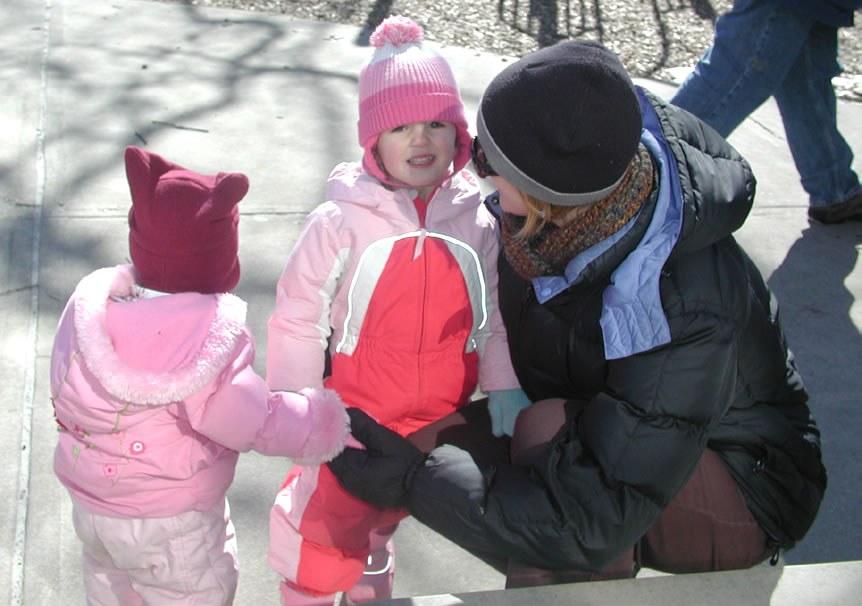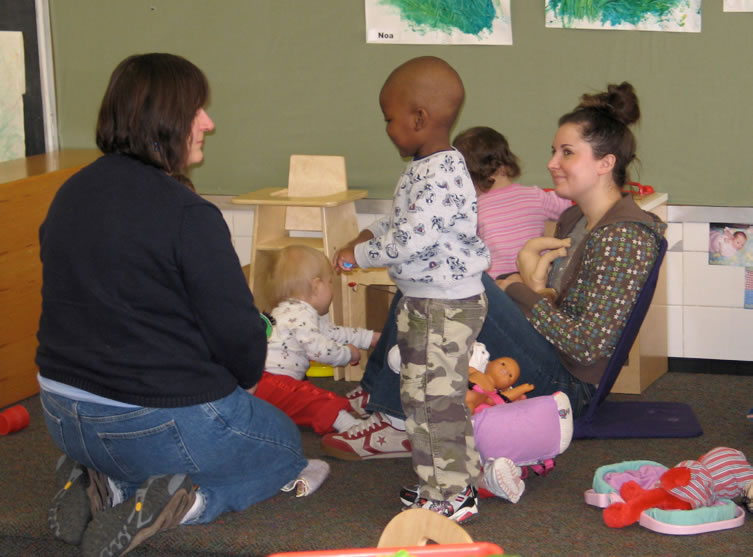“Play is some of children’s most important work,” said Fred Rogers. Those caring for children know the importance of play. How can we support play?

We also know there are many steps in developing play. Two important aspects of play for young children are entering play and sustaining play. Entering play comes naturally to some children, while others may need guidance and encouragement. How can we support play?
Developmental ability
Get to know the children you care for -- their abilities, personalities, needs, and interests. Each child is unique and may need different support for play. It's important to be familiar with all areas of development: cognitive, physical, social, emotional, and family/culture.
Using observation and information gathered from the families can be beneficial. If possible, develop portfolios or folders that share examples of the children's work over time. Save art work, writing/drawing samples, and your observation (notes, photos, checklists, etc.) that demonstrate the child's development. Knowing each child's developmental ability and unique characteristics will help in choosing appropriate materials and creating appropriate environments and experiences.
Play environment
Get down to the level of the children you care for and look around (or up!) at the surroundings. Does it look inviting? Is it easy to maneuver? Walk through your play areas and see how many children can fit there. Will the space support caring for mixed ages? Pull out materials and see if they fit in the play space. This is a good time to check for too much space. Open paths can often cause running. The space should be comfortable and flow from one area to another, yet each area of play should be well defined.
Choices?
Are there enough choices and materials to support quality play? Are the materials thought- provoking, interesting, and developmentally appropriate? Having enough material to share and duplicate items for young children is important. The environment is a teacher. Take time to observe how and where the children play in your environment and whether or not changes need to be made.
Entering play

An important part of your job is modeling positive play skills throughout your day with children. You can do this in conversation, role play, stories, or problem-solving actual play experiences. A good start is to greet children warmly with open invitations to play: "Hi, Sarah, I'm glad you're here today. Let's look around and see where you would like to play today." Remember to communicate with children at eye level and use their names. Helping children "settle in" supports entering play.
Tips for modeling play skills
- Preschoolers may need guidance in solving conflicts: "It looks like there is a problem. Sam, tell Pete what you wanted to say. Pete, what did you want to say?" or "This looks like we need to think about it. What can we do? What might be a good choice?"
- Encourage children to invite others into play: "Your building looks great! Do you need any help? Who do you want to ask?" or "Look, Sally is feeding the babies. Let's go ask her if we can help. Sally, can Anna and I help feed the babies?"
- Role-play scenarios with little toy people, animals, or puppets. Create situations that occur in the group to help children solve problems: "The elephant took the zebra's truck. What should he do?"
Sustaining play

Once play has taken its course, observe how you can keep the play going. Does the play require more props or materials? Does the space need to be adjusted? Would it be beneficial to guide the play with open-ended questions or simple suggestions? Be careful not to interrupt the play. Sometimes it's best to just observe and stand back. This is a great time to take notes. This is also a good time to read the children: Are they tired? Do you recognize any signs of frustration?
Providing these solid foundations will allow children to experience their most important and vital work -- play!
TIPS 8-4

